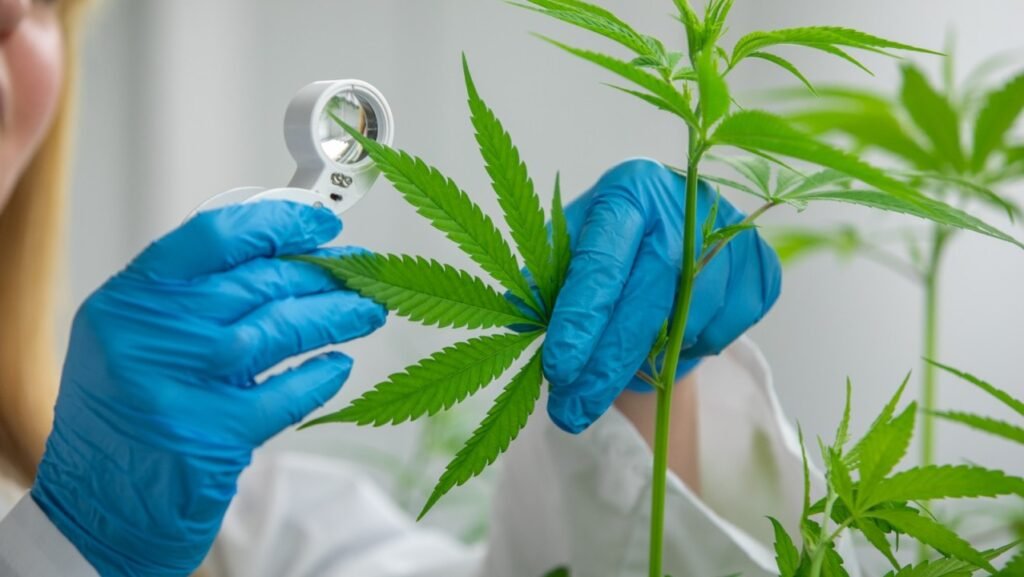Epilepsy is a chronic neurological disorder characterized by recurrent seizures. It affects over 65 million people worldwide, making it one of the most common neurological disorders globally.
Epileptic seizures occur when there is a sudden, excessive electrical discharge in the brain. This can lead to various symptoms, such as convulsions, loss of consciousness, and sensory disturbances.
Despite advances in antiepileptic drugs (AEDs), up to 30% of individuals with epilepsy do not achieve seizure control with available treatments. Also, AEDs often have significant side effects, such as cognitive impairment, liver damage, and mood changes.
Hence, there is an urgent need for alternative therapies. These are effective and safe for those who do not get benefit from conventional treatments. One potential treatment that has gained attention in recent years is medical cannabis or marijuana.
Cannabis refers to a group of plants that contain hundreds of chemical compounds known as cannabinoids. The two most well-known cannabinoids are delta-9-tetrahydrocannabinol (THC) and cannabidiol (CBD).
THC produces the psychoactive effects associated with marijuana use, while CBD has been shown to have anticonvulsant effects without producing intoxication. In this article, we will explore the potential use of cannabis as a treatment for epilepsy. It will examine current research findings on its safety and efficacy for seizure control in both children and adults with epilepsy.
The Science Behind Cannabis and Epilepsy
Exploring the Endocannabinoid System and its Relationship with Epilepsy
The endocannabinoid system (ECS) is a complex signaling network responsible for maintaining homeostasis in the body. It plays a key role in regulating several physiological processes, including pain, appetite, mood, and immune function.
Recent research has shown that the ECS also plays a significant role in the pathophysiology of epilepsy. Studies have found alterations in ECS signaling in animal models of epilepsy and in human patients with epilepsy.
Specifically, there may be an imbalance between endocannabinoid production and degradation in individuals with epilepsy, leading to aberrant signal transduction. Researchers have suggested that targeting the ECS may represent a promising therapeutic approach for treating seizures.
Discussion of Cannabinoids and their Effects on Seizures
Cannabis contains over 100 compounds known as cannabinoids, including delta-9-tetrahydrocannabinol (THC) and cannabidiol (CBD). THC is known for its psychoactive effects, while CBD is non-psychoactive but may have anticonvulsant properties. Studies investigating the effect of THC on seizures have yielded mixed results.
Some studies suggest that THC may actually exacerbate seizures, while others report anticonvulsant effects. On the other hand, CBD has shown promise as a treatment for seizures.
In fact, an FDA-approved drug called Epidiolex contains purified CBD as the active ingredient. It is used to treat rare forms of epilepsy, such as Dravet syndrome and Lennox-Gastaut syndrome. Researchers believe that CBD acts by modulating neurotransmitter release in areas of the brain responsible for seizure activity.
Additionally, it may enhance GABAergic transmission, which can help reduce excitability in neurons. Overall, research suggests that targeting cannabinoids may represent a novel approach to treating seizures in individuals with epilepsy.
Case Studies and Clinical Trials
The Story of Charlotte Figi
One of the most well-known cases involving cannabis as a treatment for epilepsy is that of Charlotte Figi. She was a young girl who suffered from Dravet syndrome, a severe form of epilepsy. Traditional medications did not effectively control her seizures, and her parents turned to medical marijuana as a last resort.
After using a high-CBD strain of marijuana, Charlotte’s seizures dramatically decreased in frequency and severity, allowing her to live a more normal life. Her story helped bring attention to the potential benefits of medical marijuana for epilepsy patients.
Clinical Trials Investigating Efficacy
There have been several clinical trials investigating the efficacy of cannabis as a seizure treatment. In one study published in The New England Journal of Medicine, researchers found that CBD significantly reduced seizures in children with Dravet syndrome.
Another study published in Epilepsy & Behavior found that patients with various types of epileptic disorders experienced significant reductions in seizure frequency after using medical marijuana. However, it should be noted that not all studies have shown positive results.
A study published in JAMA Neurology found that CBD did not significantly reduce seizure frequency in adults with treatment-resistant epilepsy. More research is needed to fully understand the potential benefits and limitations of cannabis as a seizure treatment and to determine which types and doses are most effective for specific patients.
Legal Considerations
Current Legislation Surrounding Medical Marijuana and Epilepsy
In the United States, cannabis is classified as a Schedule I drug under the Controlled Substances Act. It means that it is considered to have no medical value and a high potential for abuse. However, despite this classification, there are currently 33 states, Washington D.C., Guam, Puerto Rico, and the U.S. Virgin Islands that have legalized medical marijuana in some form.
While each state has its own laws about medical marijuana use, many allow for its use in treating epilepsy. In addition to state laws, patients seeking access to medical marijuana must also navigate federal regulations regarding its use.
The U.S. Food and Drug Administration (FDA) has not approved cannabis as a treatment for any medical condition, including epilepsy. This means that while medical marijuana may be legal in some states to treat epilepsy specifically, it is not legal on a federal level.
Challenges Faced by Patients Seeking Medical Marijuana
Despite legalization efforts across the United States, many patients still face significant challenges when trying to access medical marijuana for epilepsy treatment. One of the biggest obstacles patients face is finding physicians willing to recommend or prescribe cannabis as a treatment option.
Furthermore, because of the differing legality of medical marijuana at local vs. federal levels and within different states themselves, it can be challenging for individuals with epilepsy who want access to cannabis treatment if they are travelling or live across state lines where laws differ significantly regarding specific types of cannabis therapy (e.g., THC products versus CBD-only products). Additionally, many states don’t consider out-of-staters eligible for their respective medicinal programs. In contrast, others extend reciprocity agreements with other medicinal states, so those travelling from outside their home state would still qualify as long as they’re registered in their home state’s program. This is another challenge since not all locations offer medicinal programs at this juncture, making travel difficult even when crossing between two states where medical marijuana use is legal.
Potential Risks and Side Effects
The Dark Side of Cannabis as a Seizure Treatment
Although cannabis has shown promise in treating seizures, there are potential risks and side effects that must be considered before using it as a treatment. One major concern is drug interactions. Cannabis can interact with other medications, potentially leading to negative side effects or reduced efficacy of either medication.
Patients using medical marijuana should always inform their healthcare provider about their use to ensure safe and effective medication management. Another potential risk associated with using cannabis as a seizure treatment is cognitive impairment.
THC, the psychoactive compound in cannabis, can cause temporary memory loss, impaired judgment, and decreased concentration abilities. Patients using medical marijuana for seizure treatment should take caution when driving or operating heavy machinery.
Side Effects Reported by Patients Using Medical Marijuana
Patients using medical marijuana have reported various side effects, both positive and negative. Some patients have reported feeling more relaxed and less anxious after taking cannabis for seizures, while others have reported increased anxiety and paranoia.
Other possible side effects include dry mouth, dizziness, nausea, vomiting, or diarrhea. A particularly concerning side effect of long-term cannabis use is the risk of developing Cannabinoid Hyperemesis Syndrome (CHS). It causes severe vomiting and abdominal pain in frequent users of high-potency cannabis products.
The exact cause of CHS is unknown, but it’s believed to be related to an overstimulation of the endocannabinoid system. It is due to prolonged activation by high doses of THC over time. It’s important for patients considering medical marijuana for seizure treatment to discuss potential risks and benefits with their healthcare provider before starting any new treatment regimen.
Future Research Directions
Optimal Dosages and Delivery Methods
While current research indicates that cannabis has potential as a treatment for epilepsy, much work still needs to be done to determine the most effective dosages and delivery methods. Studies have shown that the ratio of THC to CBD can impact the efficacy of cannabis as a seizure treatment, with some patients responding better to higher levels of THC while others see greater benefits from CBD.
Additionally, researchers are exploring different methods of delivery. This includes oral capsules and vaporization to determine which offers the most consistent effects and lowest risk of side effects. One promising avenue for future research involves investigating the use of personalized medicine in determining optimal dosages.
By analyzing factors such as a patient’s genetics and metabolic rate, researchers may be able to identify individualized dosing strategies that offer maximum benefit with minimal side effects. Furthermore, by conducting long-term studies on patients using various dosages and delivery methods, researchers can gain a better understanding of how best to prescribe cannabis as a seizure treatment.
The Need for Further Research for Epilepsy
While research into cannabis as an epilepsy treatment has made significant progress in recent years, there is still much we do not know about its potential benefits and risks. Some key areas ripe for further investigation include:
– Long-term safety:
While short-term studies suggest that cannabis is generally safe for use as an epilepsy treatment when taken under medical supervision, more research is needed on its long-term effects on physical health and cognitive function.
– Interactions with other medications:
Many patients with epilepsy take multiple medications beyond just those aimed at controlling seizures. More work is needed to understand how these medications interact with cannabis.
– Effects on developing brains:
Cannabis use during adolescence has been linked to changes in brain structure and function.
As such, further study is necessary before medical professionals can confidently recommend it as a treatment option for children. By addressing these and other research gaps, we can better understand the potential of cannabis as a seizure treatment while also ensuring that it is used safely and appropriately.
Conclusion
The Future of Cannabis as an Epilepsy Treatment
The potential of cannabis as an epilepsy treatment is exciting. While research is still ongoing, the studies conducted so far have provided promising results. Several anecdotal reports and case studies suggest that cannabis can be effective in reducing the frequency and severity of seizures in people with epilepsy. This includes those who do not respond well to traditional medications.
However, more research is needed to fully understand how different types of cannabis and dosages may affect seizure activity in the long term. As we move forward, it is important for policymakers, healthcare providers, and patients to have access to accurate and up-to-date information about medical marijuana.
Education campaigns can help dispel myths about the plant’s effects on the body and mind while also promoting safe use practices. Additionally, researchers must continue working towards identifying which cannabinoids may be most effective at treating different types of seizures.
A Positive Outlook
While there are still many unanswered questions surrounding cannabis as a treatment for epilepsy, it’s clear that there is great potential for this natural remedy to make a significant impact on patient outcomes. With more research being conducted each day, we are closer than ever before to unlocking the full potential of medical marijuana. Ultimately, it will take continued collaboration between researchers and healthcare professionals to fully explore all aspects of this fascinating topic.
Whether through clinical trials or patient-led initiatives designed to better understand how cannabis affects seizure activity in real-time settings – there is much work yet to be done. However, with growing awareness concerning medical cannabis’ potential benefits and a continued push towards federal legalization across various jurisdictions worldwide – we remain optimistic about what tomorrow may hold for those suffering from seizure-related conditions like epilepsy!


